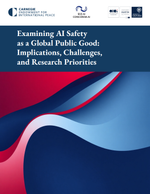Cell Reports Physical Science
Jiahao Yu, Minjun Yang, Christopher Batchelor-McAuley, Samuel Barton, Rosalind E.M. Rickaby, Heather A. Bouman, Richard G. Compton, Does the life cycle stage matter for distinguishing phytoplankton via fluoro-electrochemical microscopy?, Cell Reports Physical Science, Volume 4, Issue 1, 2023, 101223, ISSN 2666-3864, https://doi.org/10.1016/j.xcrp.2022.101223.
View Journal Article / Working PaperPhytoplankton have species-specific responses toward electrogenerated oxidants, allowing high-throughput species analysis. Herein, a fluoro-electrochemical method is used to expose single Chlamydomonas concordia vegetative cells at different points within their life cycle to electro-generated oxidants from seawater. The resulting decay in fluorescence from chlorophyll-a is measured as a function of time and drops to zero for phytoplankton adjacent to the electrode over a period of a few seconds. The chlorophyll-a transient timescale allows mother cells, which are distinctively larger and require a larger quantity of oxidants, to be distinguished from either zoospores or “growing” cells, while all the cells show the same intrinsic susceptibility modulated only by the size of the phytoplankton. These observations are essential for the future automated characterization of the speciation of phytoplankton populations as they show that there is no need to manually identify the life cycle stage.




